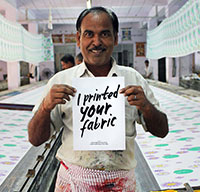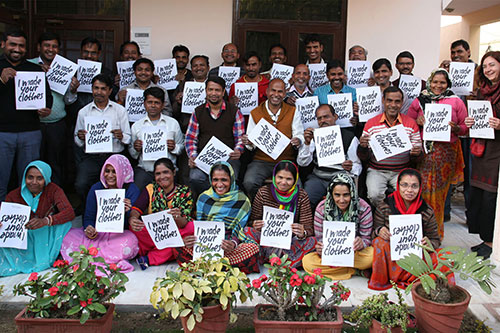"Though brands remain committed to reduce greenhouse gas emissions, buy carbon offsets and develop new sustainable materials, experts have raised doubts over the genuineness of these commitments. This is owing to the fact that though the industry has been introducing innovations periodically besides running pilot projects, it hasn’t yet brought any of it to the scale that’s needed. Today, the industry produces about 8 per cent of the total carbon emissions."
 Though brands remain committed to reduce greenhouse gas emissions, buy carbon offsets and develop new sustainable materials, experts have raised doubts over the genuineness of these commitments. This is owing to the fact that though the industry has been introducing innovations periodically besides running pilot projects, it hasn’t yet brought any of it to the scale that’s needed. Today, the industry produces about 8 per cent of the total carbon emissions. And, as per Ellen MacArthur Foundation, this is expected to rise to 26 per cent of the total emissions by 2050.
Though brands remain committed to reduce greenhouse gas emissions, buy carbon offsets and develop new sustainable materials, experts have raised doubts over the genuineness of these commitments. This is owing to the fact that though the industry has been introducing innovations periodically besides running pilot projects, it hasn’t yet brought any of it to the scale that’s needed. Today, the industry produces about 8 per cent of the total carbon emissions. And, as per Ellen MacArthur Foundation, this is expected to rise to 26 per cent of the total emissions by 2050.
Redesigning supply chain for sustainability
Though dozens of brands signed the Kering-led Fashion Pact last year, in order to be truly sustainable, the industry needs to transform its supply chain entirely. However, supply chain transformation is costly as most brands don’t own their suppliers. This separates them from associated environmental impacts — and benefits if they invest in upgrades.
Government policies play a major role
The industry’s progress on sustainability largely depends on government reforms. If the government fails to introduce appropriate policies, brands that invest on sustainability will be at a loss. To avoid this, brands must invest in sustainable supply chains through public financing of upfront costs for things like shifting agricultural practices. In turn, they should commit to buy materials from farms making changes.
introduce appropriate policies, brands that invest on sustainability will be at a loss. To avoid this, brands must invest in sustainable supply chains through public financing of upfront costs for things like shifting agricultural practices. In turn, they should commit to buy materials from farms making changes.
Fashion can also influence many government’s decisions as apparel and footwear manufacturing makes up a large portion of exports. For instance, though fashion comprises 84 per cent of Bangladesh’s exports, its government is currently planning an expansion of coal-fired plants.
Impact of legal policies
Similarly, a country’s laws can significantly influence the behavior of brands. UK’s Modern Slavery Act and California’s Transparency in Supply Chains Act have led to many brands introducing new reforms in their supply chains. Some of these brands have implemented ethical trade policies or commissioned audits on labor conditions at suppliers or recognised unionisation efforts.
Brands are redesigning supply chains to minimise costs at every step. However, to be truly sustainable, they need to amend their legal governing documents to balance profit and purpose. Though this may lead to increased costs for consumers, it will help the industry curb overconsumption and overproduction.
Exploring the rental market
Another way brands are being sustainable is by exploring the $1 billion rental market. Primarily a North American phenomenon, rental services are gaining popularity in Europe and Asia, although its impact on the consumers’ shopping behavior remains unclear.












